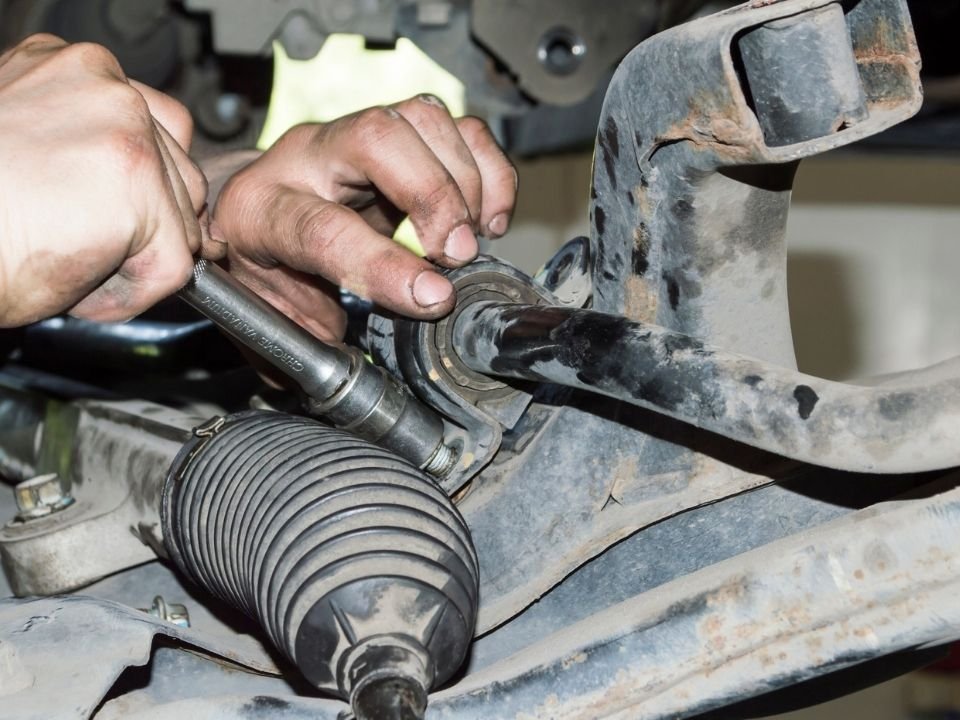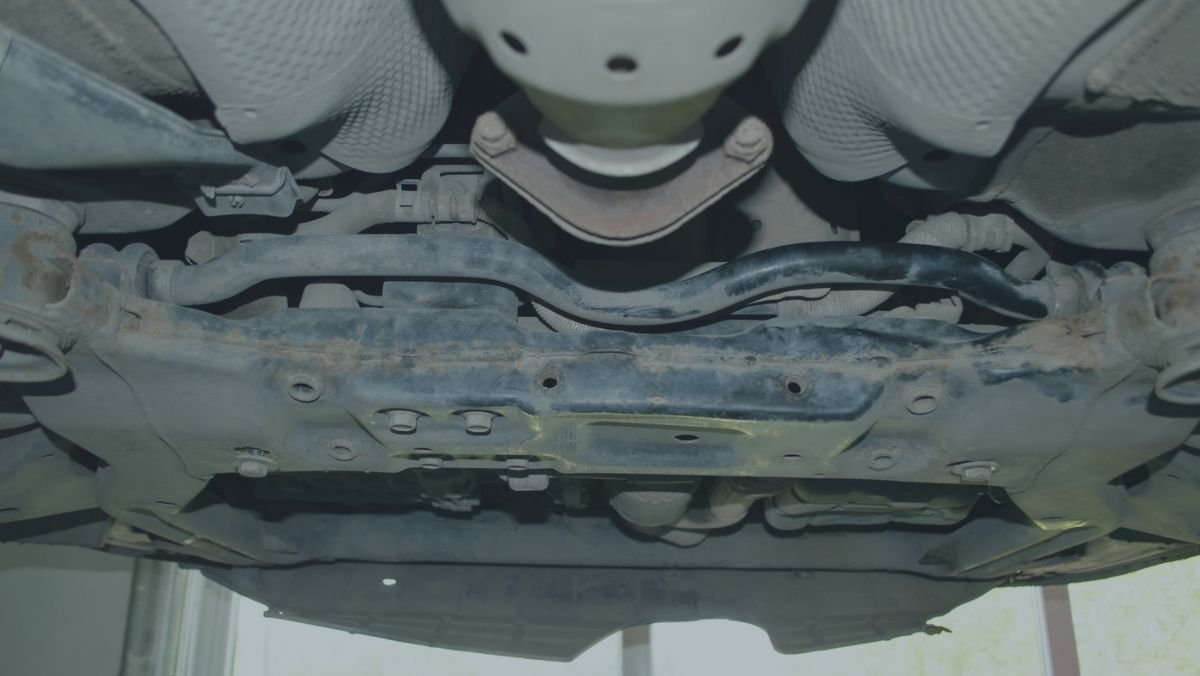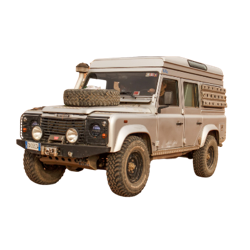One of the crucial components of the vehicle’s suspension system is the sway bar. However, many of us are not familiar with the purpose of the sway bar.
Most modern vehicles come with sway bars. You can upgrade the stock sway bar with an aftermarket one for improved handling and a few other benefits.
On the other hand, your vehicle might not need any upgrade when it comes to the sway bar, depending on the places you drive your car.
In this post, we will talk all about sway bars. We will explain what a sway bar is, and will also talk about the functions of a sway bar, its pros and cons, and more.
What Is A Sway Bar?
For the record, sway bars are also called roll bars, or anti-sway bars, or stabilizer bars, or anti-roll bars. A sway bar is a part of the suspension system of your vehicle, which reduces the amount of body roll of the rig while cornering at a higher speed.
An anti-roll bar is a tubular-shaped metal bar that is connected to both the left and right wheels of the vehicle, via the suspension control arms. Some vehicles have sway bars on both front and rear wheels, whereas a few come with roll-bars at the front side only.
Generally, a sway bar will be U-shaped from one end to another. On each end, there would be a few curls or kinks.
They also come with accessories like bushings and sway bar links. Interestingly, the sway bar is run through the bushings, so that it can only twist but not move up or down.
The Purpose of a Sway Bar
While cornering at a very high speed, you might have noticed that the car shows a tendency to lean/roll over in the opposite direction of the turn. It is a natural phenomenon, but that’s when the sway bar comes into play.
The main purpose of the anti-roll bar is to cancel out that roll-over force by applying an opposing force to the suspension system and wheels.
In turn, both the forces level out and prevent the vehicle from leaning too much. This results in a comfortable ride while on the highway.
Put another way, sway bars increase the roll stiffness of the suspension and resistance to roll in corners or turns. Along with that, sway bars can also improve the handling and traction of your truck as it is always there to keep things as stable as possible.
There are adjustable anti-roll bars out there. You can adjust them to act more stiff or soft depending on your need. Because of that tuning, it can help you reduce oversteer and understeer issues as well.

How Does A Sway Bar Work?
A sway bar basically links both left and right wheels across the axle. This is a solid metal bar of tubular shape with a few curves here and there. Usually, it is connected to the suspension control arms and the chassis using flexible bushings, torsion springs, and sway bar links.
Because of this, the anti-roll bar can twist freely, ao whenever you are turning or cornering at a high speed, the anti-sway bar twists on its axis and applies an opposing force to resist the body roll/lean to keep the rig planted to the surface.
The bushings keep the sway bar in its place. They absorb parts of the energy consumed by the anti-roll bar. On the other hand, the sway bar links are there to connect the stabilizer bar to the suspension system.
Why Use A Sway Bar?
Especially for high-performance vehicles, there are a lot of benefits to using sway bars. Due to this, almost all modern rigs come with one or two anti-roll bars. First of all, they improve the handling, grip, and stability of the car.
The anti-roll bar forces both sides of the vehicle to move up or down to similar heights consistently. In turn, it reduces the sideways tilting (body rolls) of the rig while cornering. Without sway bars, the tires can tilt or lean further away from one another based on the surface, while reducing stability.
In that sense, sway bars can be pretty useful for trucks or trailers that tow or haul loads, or for on-road vehicles for turning around corners at high speed without any danger. On the other hand, for better off-road capability and articulation, you can remove or disconnect the anti-roll bar.
Sway Bars and Off-Roading
One of the main advantages of sway bars is that they offer improved handling. They also help to keep the wheels aligned and the car more level. However, when you are driving on rough terrains or crawling rocks somewhere in the wild, it might not be what you are looking for.
As sway bars connect both sides of the wheels, the left and right wheels are not moving independently of each other in this case. As a result, if one wheel is going over a bump, the other one will also feel the effect of that bump. In the end, this will make the ride more uncomfortable.
You will also want a maximum amount of articulation while rock crawling or off-roading. In these instances, the anti-roll bar will be obsolete as it works to keep the vehicle as steady as possible by preventing the vehicle from tilting too much.
Turns out, many off-road cars come with sway bars that can be disconnected on the fly with a push of a button. That way whenever you want more freedom with the tires off-road, you can disconnect the sway bars.
Stock vs. Aftermarket Sway Bars
As you know, most vehicles come with stock sway bars for the front and rear wheels nowadays. But what are the differences between an aftermarket sway bar and a stock one? Interestingly, both of those will be similar in size and shape.
The only differences will be with the weight, stiffness, adjustability, and accessories. Typically, aftermarket sway bars would be more adjustable, stiffer, and lightweight compared to the stock ones.
Should You Upgrade or Disconnect Your Sway Bar?
Upgrading the sway bar has its benefits and drawbacks. However, we think it is far more useful to upgrade your sway bar than not doing it for your car’s body.
This is because they can give a boost to the handling of your truck and traction on tires. Furthermore, it can also be helpful to keep your car from rolling over while cornering fast.
On the other hand, if you are overlanding or off-roading, you might disconnect the sway bar (if your car allows). It could come in handy while rock crawling in order to achieve the maximum articulation from the suspension system and the car’s body.
But all of this boils down to your opinion. If you think your anti-roll bar needs an upgrade or tuning the stiffness will do, you can do so. Or if you think it is not worth it for the overall performance, then you can skip it like your car’s bumper.
What Does A Track Bar Do?
Most Jeep and 4×4 cars will come with track bars. Even though the track bar and sway bar sound the same, they are two different pieces of equipment.
In short, the track bar of your Jeep will prevent or reduce wobble and vibrations from the chassis and suspension system. Track bars don’t need to be upgraded, removed, or replaced frequently.
FAQ
Is It Safe To Drive A Car With A Broken Sway Bar?
No. It is not safe to drive a car with a broken anti-roll bar, whether it is the front sway or the rear sway bar. But that doesn’t mean that it is not possible to drive with a faulty sway bar.
However, it can be dangerous and it will have an effect on the performance of the vehicle as well. So, if you notice that there is an issue with the anti-roll bar or any other parts of the suspension, you should repair or replace it as soon as possible.
Do Sway Bars Make A Difference?
Obviously. Sway bars (front and rear sway bars) are included in most modern cars because of their benefits. They improve the vehicle’s handling.
Next, they control and keep the suspension system and wheels appropriately aligned and planted. On top of that, stabilizer bars will keep your vehicle from rolling over while turning.
How Important Is A Sway Bar?
Simply put, the anti-roll bar is a very important component of your car’s suspension system. The primary function of this instrument is to keep your vehicle steady around turn and corner.
Also, it can help diminish oversteer and understeer issues and can improve the handling and traction of your Jeep.
What Are The Symptoms Of A Bad Sway Bar?
Sway bars are stiff pieces of metal, so they rarely suffer damage under proper driving conditions. However, the other parts of the sway bar like the bushings, sway bar links, etc. can go bad. In such cases, you might start to feel a difference in handling or the grip while at a corner or turn.
Next, a jarring or vibrating sensation while driving could indicate that there is an issue with the sway bar inside. Some other symptoms of a faulty sway bar are rubbing noise, squeaks, knocking sounds, whirring, and clunking.
Of course, this could also be a sign that something other than the sway bar on the drivetrain system or the tire of your truck has gone bad. So, it is better to contact a professional or check the issue yourself as soon as possible.





